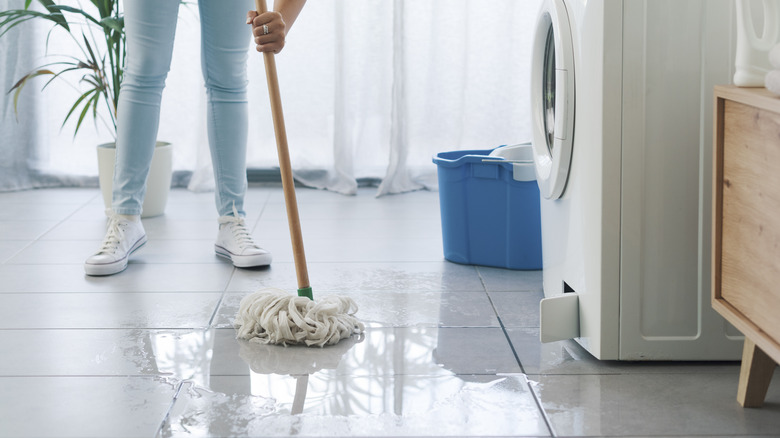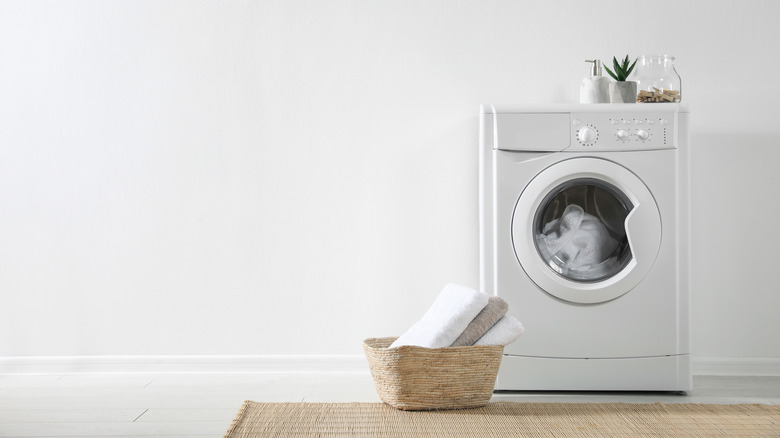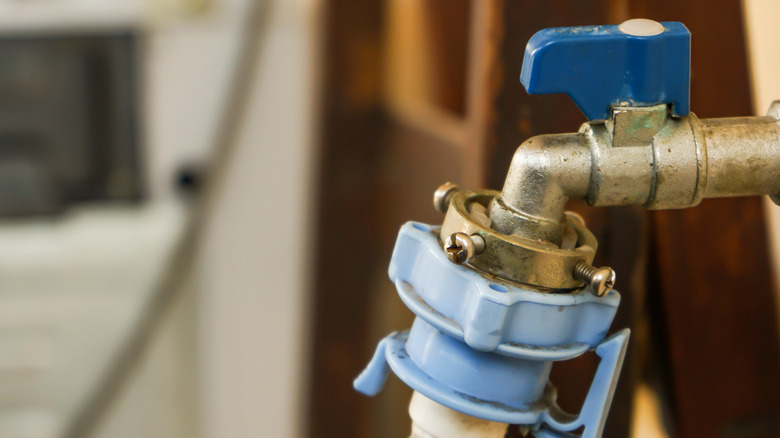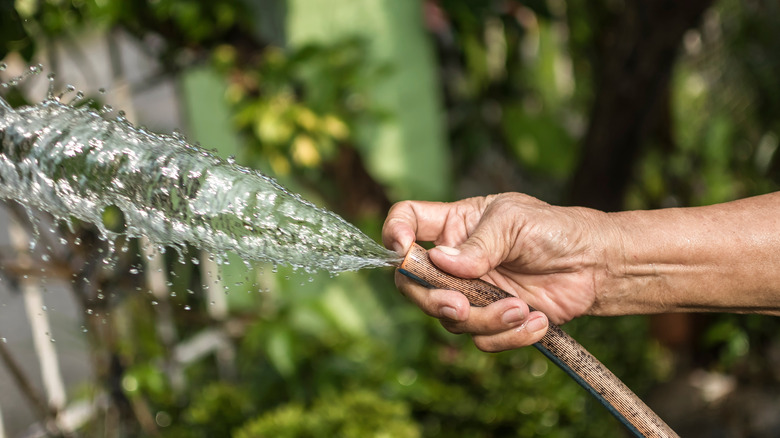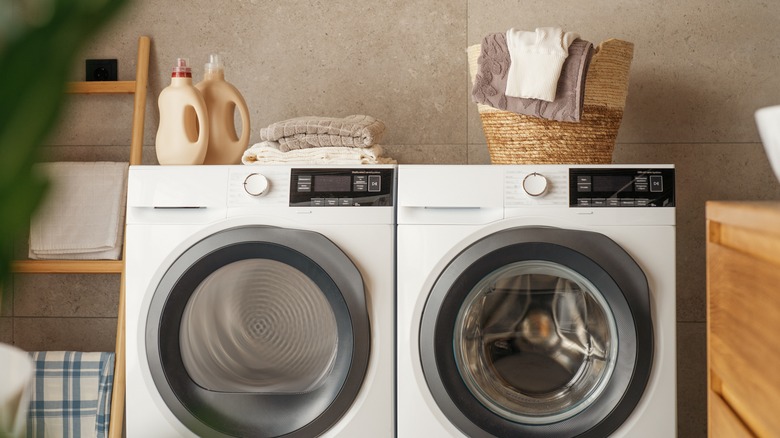An Expert Explains Why Your Washing Machine Won't Drain
Washing machines are a core piece of equipment in the modern American home. Today, more than 85% of U.S. households have one, per The U.S. Census Bureau. This makes the feature as prevalent, if not more so, than home internet service (via Statista)! They equip us to deal with the fast pace of modern life and take some of the stress out of household chores.
That's why it comes as such a derailment when the unit begins to deteriorate or stops working altogether. A drainage issue is one of the common problems that household washers face, and it can be immensely frustrating to deal with. In an exclusive interview with House Digest, Jim Schmid, the owner of Diamond Factory Service in Wisconsin, offers some crucial advice on why your washing machine may be experiencing drainage issues. He also provides a few pieces of advice for fixing the appliance so you can get back to using it without having to pay an arm and a leg for a replacement.
The drain pump is clogged
Perhaps the most common issue that can create weak draining from the washer's interior drum is a clog. "This typically occurs when lint, dirt, and other debris accumulate inside the pump's housing, causing it to become blocked or jammed. As a result, water is unable to flow out freely and leaves your laundry in a sopping mess," notes Jim Schmid.
Improper draining of the liquid inside your washer won't just result in wet clothing that needs additional drying time. If the unit can't remove the liquid, then it also isn't taking away the soapy water before adding fresh liquid for the final rinse. This can leave your clothing with a musty odor or caked in soap scum that needs to be scrubbed out before the clothes can be dried and worn again. "To avoid this, you should inspect the drain pump and its surrounding area every once in a while to make sure it isn't clogged or blocked by any substances. Additionally, you should regularly clean out the filter compartment of the washing machine since lint can often find its way into the pipes via this route," he says.
You have a faulty water valve
The problem can exist farther up the washing machine's infrastructure, too. All appliances that rely on water need a direct connection to the pipes in your walls. "The valve, which controls the flow of water in and out of the machine, may become clogged or jammed due to an accumulation of debris and minerals," says Jim Schmid. "As a result, it fails to open up when it should, thus preventing the water from leaving the machine during the cycle."
In addition to the appliance itself, Schmid suggests that you should "regularly clean and inspect the valves of your washing machine. You should also check for any blockages or buildup in any other areas where water flows through, as these can also interfere with proper drainage." Most washing machine models have a drainage valve housed beneath a flap along the bottom of the unit. Flipping this open will reveal the water valve and allow you to test it and check for any debris that may have become lodged inside.
The hose is blocked
Both inside and externally, a series of hoses are responsible for moving water into and out of the washing machine's drum. These features are often made of rubber, PVC, or a variety of other durable materials. Just like in any other apparatus, from the human heart to the hose lines that bring oil into the engine of your car, these can become blocked or clogged with debris. In the washing machine, "blocked hoses happen when lint, dirt, and other debris accumulate in the hose over time, causing it to get clogged or blocked up," according to Schmid.
The clothes you wash are covered in all kinds of foreign objects. Whether you can see the dirt and grime or not, the debris is still there, and with enough time, it can create severe blockages inside your washer. Schmid says that as a homeowner, you should "regularly inspect the hoses of your washing machine for any buildup or blockages. Additionally, you should check for any kinks or bends as these can also prevent proper drainage from occurring."
The pump motor is worn out
The last problem Jim Schmid points out is a mechanical failure. Rather than an easily diagnosed and fixed issue in the washer, this one happens naturally over time and may be the first indicator that you'll soon need a replacement for the appliance. "When the motor begins to wear out, it can no longer generate the necessary power to drive the pump so water cannot move through and away from the machine," Schmid says.
"The best way to prevent this issue is to regularly inspect and maintain your washing machine's pump motor. You should also make sure that any other components related to the motor, such as electrical switches and belts, also remain in good condition," he notes. Maintaining your appliances is a good habit to be in, regardless of the unit in question. Proper care and routine inspections of the moving parts, electrical systems (like the pump motor and its wiring), and any hoses, attachments, valves, or other components can give you a long-lasting appliance that performs its job without fault. This also gives you a sense of when your washer or other appliance starts to exhibit a dip in performance, allowing you to plan far in advance for an eventual replacement.
